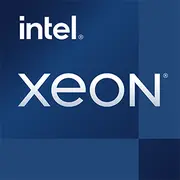Intel Xeon W-3175X

Intel Xeon W-3175X: An Extreme Platform for Professionals
Relevant as of April 2025
Key Features: Architecture and Performance
The Intel Xeon W-3175X processor, released in late 2018, remains a niche solution for tasks requiring extreme multi-threaded performance. Despite its age, it continues to be relevant in specific scenarios due to its unique features.
Architecture and Process Technology
- Codename: Skylake (modified version for Xeon).
- Process Technology: 14 nm (Intel 14nm++), which is considered outdated by 2025 but provides stability.
- Cores/Threads: 28 cores, 56 threads — the maximum for the desktop segment at the time of release.
- Frequencies: Base — 3.1 GHz, maximum in Turbo Boost — 4.3 GHz (single core).
- Cache: L3 — 38.5 MB (1.375 MB per core).
- TDP: 255 W — requires serious cooling.
Performance
- Geekbench 6:
- Single-Core: 1467 (comparable to Intel Core i9-10900K).
- Multi-Core: 13646 (close to AMD Ryzen Threadripper 3970X).
- Strengths:
- Optimization for parallel tasks (rendering, simulations).
- Support for AVX-512 — acceleration of scientific computations.
- Key Features:
- Unlocked multiplier for overclocking (a rarity among Xeon).
- Supports up to 512 GB DDR4 and 68 PCIe 3.0 lanes.
Compatible Motherboards: Socket and Chipsets
The Xeon W-3175X uses an exclusive LGA 3647 socket, limiting motherboard choices.
Recommended Models
- ASUS ROG Dominus Extreme: The only gaming-oriented board for this processor (price in 2025: ~$800–$1000 on the second-hand market).
- Gigabyte C621 AORUS XTREME: Focus on stability and VRM cooling.
- Supermicro MBD-X11SPA-T: For workstations with ECC memory support.
Selection Considerations
- Chipset: Intel C621 — optimized for server tasks.
- Requirements:
- Powerful power supply system (24-phase VRM).
- Support for 6–8 memory channels.
- Advanced cooling options (heatsinks on MOSFETs).
Supported Memory: DDR4 and Its Configurations
- Type: Only DDR4 (DDR5 not supported).
- Frequencies: Up to 2666 MHz (officially), but some boards allow overclocking to 3000–3200 MHz.
- Configurations:
- 6-channel mode (minimum 6 modules).
- Maximum capacity — 512 GB (using 64 GB modules).
- Tip: Use kits with low timings (CL14–16) to reduce latency.
Power Supplies: Power Calculation
With a TDP of 255 W and peak consumption up to 400 W (when overclocked), the choice of PSU is critical.
Recommendations
- Minimum: 850 W (for systems without multiple graphics cards).
- Optimal: 1000–1200 W with an 80+ Platinum/Titanium certification.
- Examples:
- Corsair AX1200i (digital control, efficiency 92%).
- Seasonic PRIME TX-1000 (12 years warranty).
- Nuances:
- Avoid cheap PSUs — possible voltage drops.
- Use thicker cables (16 AWG).
Pros and Cons of Xeon W-3175X
Advantages
1. Multi-threaded Power: 56 threads are relevant for rendering in Blender or compiling code.
2. Overclocking Potential: With good cooling, it can achieve 4.5 GHz on all cores.
3. ECC Memory Support: Reliability for workstations.
Disadvantages
1. Platform Cost: Motherboards and PSUs will cost between $1500 and $2000.
2. Energy Consumption: Electricity bills will increase, especially under load 24/7.
3. Outdated Standards: PCIe 3.0 and DDR4 versus PCIe 5.0 and DDR5 in modern CPUs.
Use Cases: Where W-3175X is Still Relevant
Work Tasks
- 3D Rendering: In Maya or Cinema 4D, the processor performs at the level of the Threadripper 3970X.
- Scientific Calculations: AVX-512 accelerates tasks in MATLAB or ANSYS.
- Virtualization: Running dozens of VMs without slowdowns.
Gaming
- Streaming: 56 threads handle encoding in OBS + gaming.
- Multi-threaded Projects: For example, Microsoft Flight Simulator 2024 at maximum settings.
Multimedia
- Video Editing: Rendering 8K in DaVinci Resolve is 1.5 times faster on 28 cores than with the Core i9-14900K.
Comparison with Competitors
AMD Threadripper 2970WX (24 cores/48 threads)
- Cheaper (~$1200 in 2025 compared to $3000 for a new W-3175X), but weaker in single-threaded tasks.
- The TRX40 platform supports PCIe 4.0.
Intel Core i9-14900KS (8P+16E cores)
- Higher IPC and frequency (up to 6.2 GHz), but the 28 Xeon cores win in parallel tasks.
Modern Alternatives (2025)
- AMD Ryzen Threadripper 7970X (64 cores): 3 times more expensive, but 2.5 times more powerful.
- Intel Xeon W9-3595X (56 cores): Based on Golden Cove, with DDR5 and PCIe 5.0.
Practical Assembly Tips
1. Cooling:
- Liquid Cooling: Arctic Liquid Freezer III 420 or a custom water loop.
- Thermal Paste: Thermal Grizzly Kryonaut.
2. Case: Full-Tower (for example, Lian Li PC-O11 Dynamic XL) with 8+ fans.
3. Drives: NVMe SSD (Samsung 990 Pro 4TB) to reduce bottlenecks.
Conclusion: Who is the Xeon W-3175X Suitable For?
This processor is worth considering only in two cases:
1. Upgrading an Old System: If you already have a compatible motherboard and RAM.
2. Budget Alternative: When maximum multi-threading is needed but there is no $5000 for a modern Threadripper.
Final Verdict: The W-3175X in 2025 is a choice for enthusiasts and professionals willing to overlook platform shortcomings for unique advantages. For most users, modern CPUs will be more practical.
Basic
CPU Specifications
Memory Specifications
Miscellaneous
Benchmarks
Compared to Other CPU
Share in social media
Or Link To Us
<a href="https://cputronic.com/en/cpu/intel-xeon-w-3175x" target="_blank">Intel Xeon W-3175X</a>